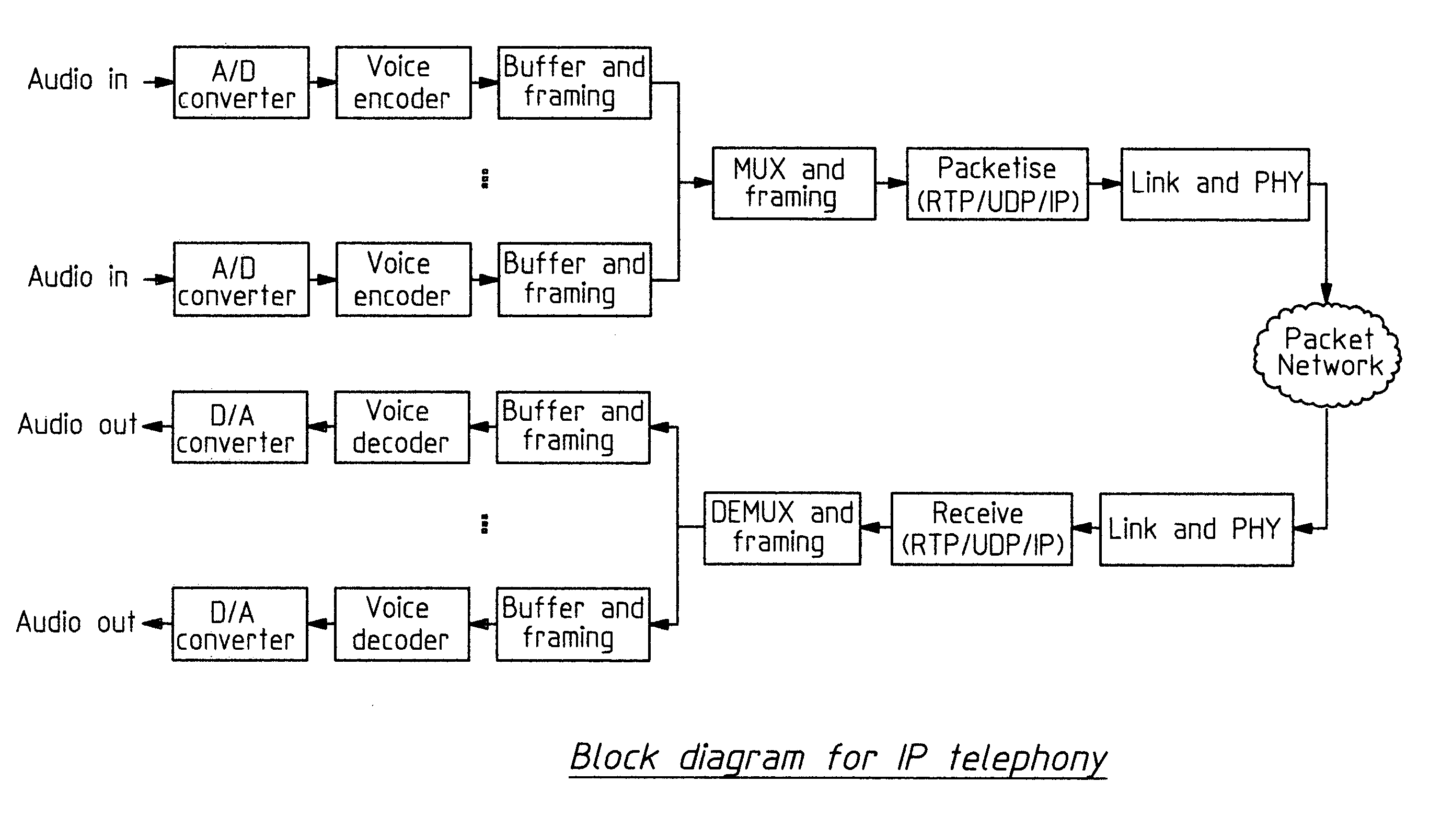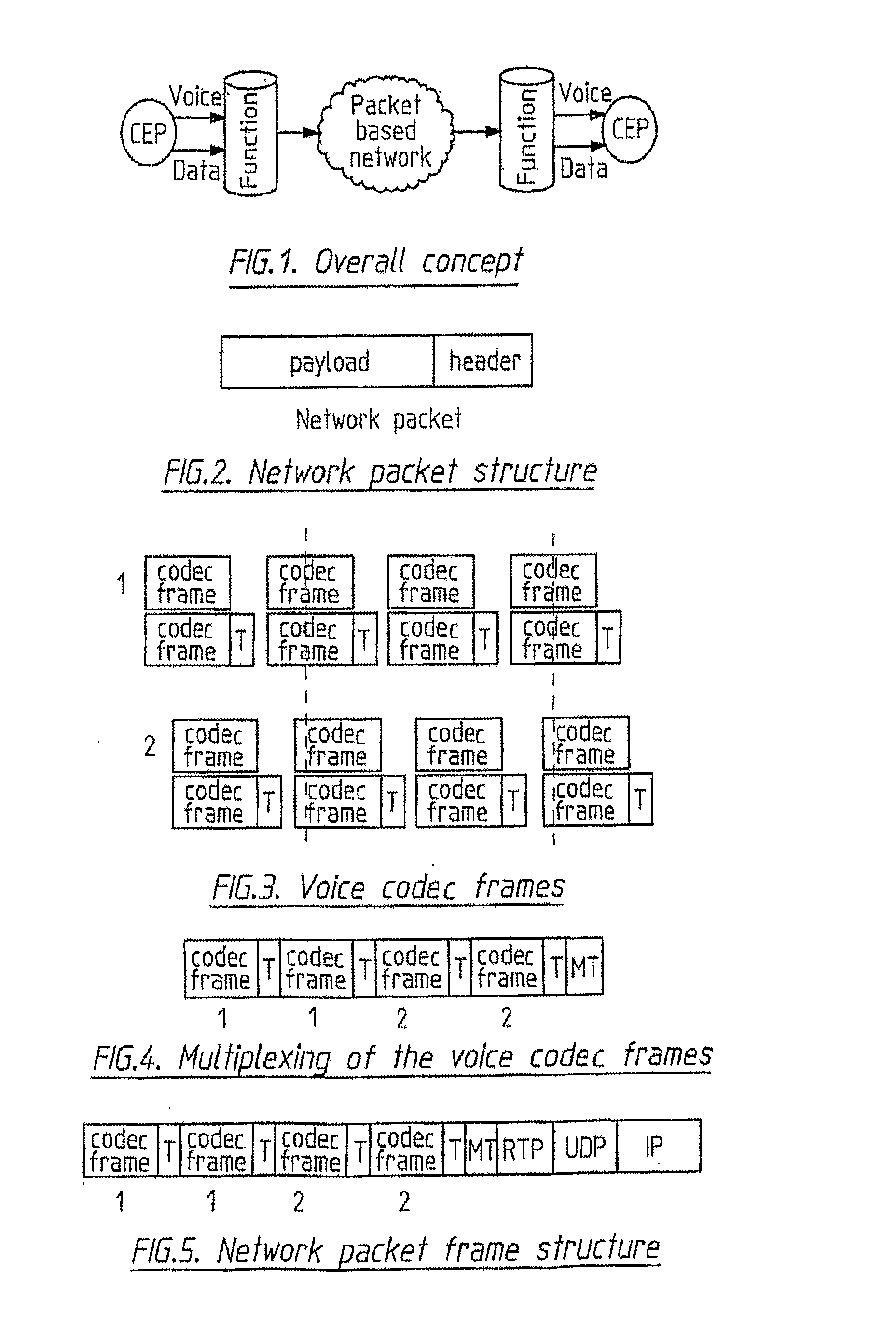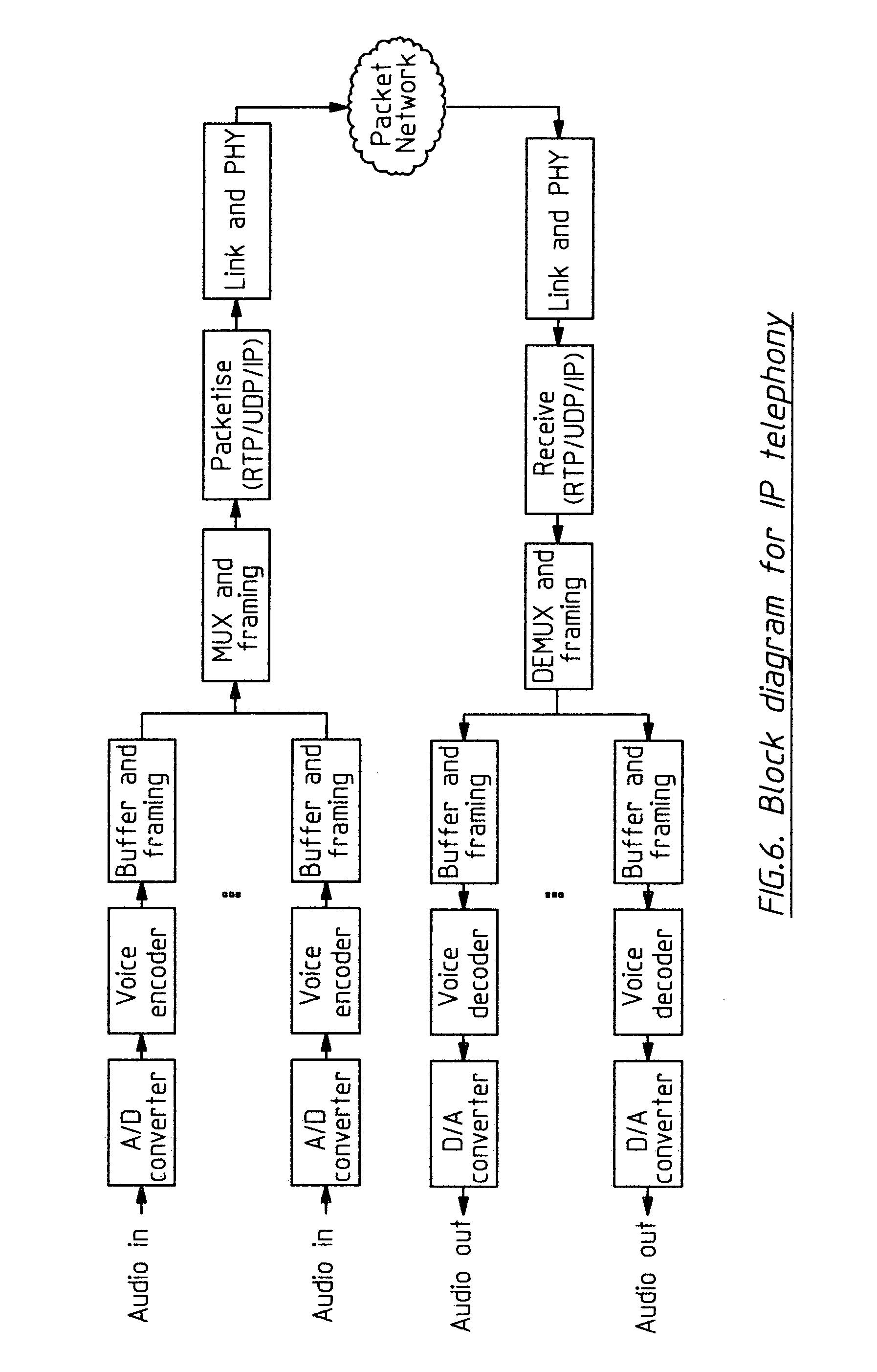Packet based communications
a packet and communication technology, applied in the field of packets, can solve the problems of high ratio of packet overhead to payload transmission, inability to read information, and inefficiency, so as to reduce the effect of overhead, improve throughput, and reduce jitter tim
- Summary
- Abstract
- Description
- Claims
- Application Information
AI Technical Summary
Benefits of technology
Problems solved by technology
Method used
Image
Examples
Embodiment Construction
[0057]In this example we use the concept of a “time slice” which is defined to be the reciprocal of the network packet transmission rate.
[0058]The “time slice” duration is dependent on the number (n) of voice frames that can be generated by a voice codec during the “time slice”:
Time slice duration Tsl=n*voice codec time frame duration.
[0059]A “time slice” packet is assembled from the data, both time-critical (voice) and non time-critical (data) produced during a “time slice”, plus a header.
[0060]The “time slice” packets are synchronised with both the existing timing of the time-critical communications, that is the voice (audio) codec time frame duration; and, with the link speed, that is the available end to end communication speed between the two communication end points. As a result the optimum “time slice” packet size can be calculated from:
Time slice packet size=link speed*Time slice duration
[0061]The “time slice” packet has a structure determined by the network packet structure...
PUM
 Login to View More
Login to View More Abstract
Description
Claims
Application Information
 Login to View More
Login to View More - R&D
- Intellectual Property
- Life Sciences
- Materials
- Tech Scout
- Unparalleled Data Quality
- Higher Quality Content
- 60% Fewer Hallucinations
Browse by: Latest US Patents, China's latest patents, Technical Efficacy Thesaurus, Application Domain, Technology Topic, Popular Technical Reports.
© 2025 PatSnap. All rights reserved.Legal|Privacy policy|Modern Slavery Act Transparency Statement|Sitemap|About US| Contact US: help@patsnap.com



